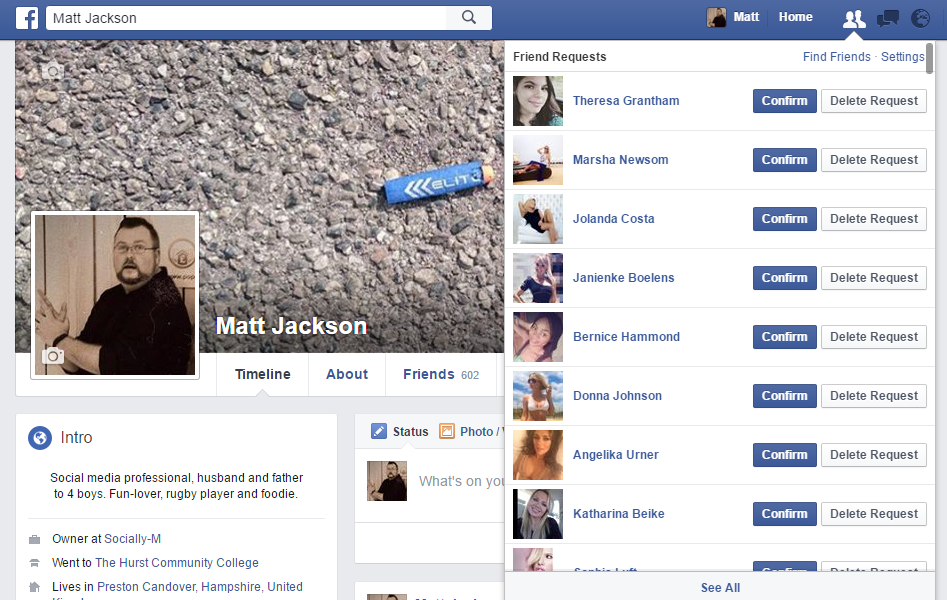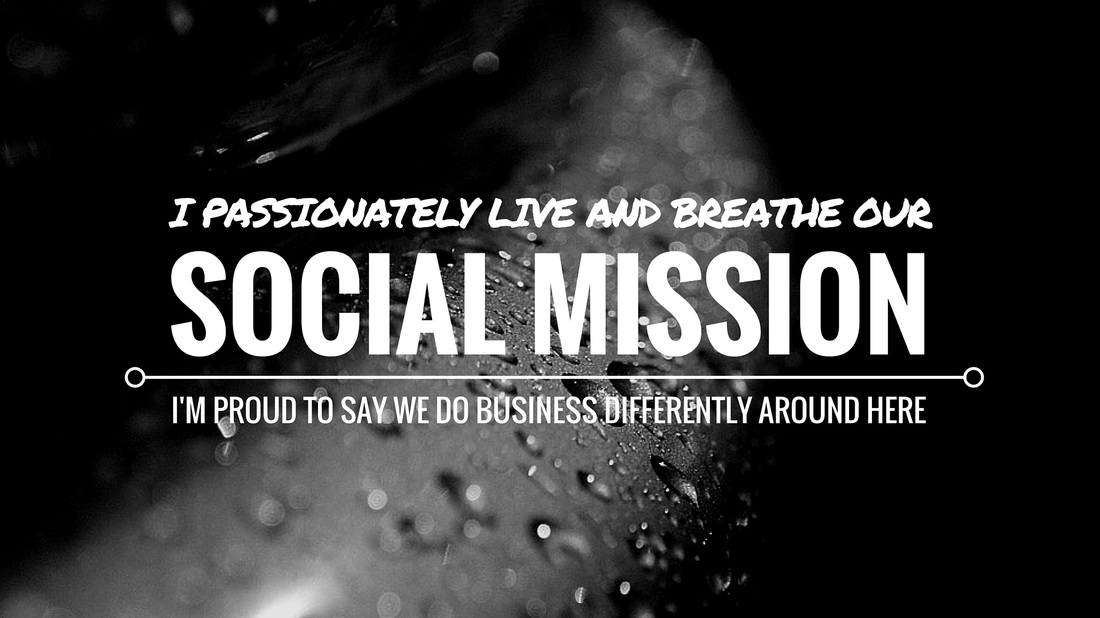|
I started my morning in the office today as I always do, with a coffee and a catch-up of Twitter newsfeeds to see what I might have missed in the short period of time that I actually sleep and am away from a screen. There's always a handful of accounts that I make a point of checking, usually of the people who I admire or look up to in the social media world. So I was surprised and a little disappointed to find that seven of them had posted the same headline and link in quick succession. Content curation is nothing new and we see it all the time across all the social platforms, but this morning it did make me wonder where the value is in all of us sharing the same content over and over again. I remember when I first became interested in social media in around 2008, when tasked with helping develop how social media could be used by utility companies, and every piece of advice available constantly reiterated that around 60% of all content should be curated or shared from a third-party. It didn't sit well with me then as I felt that businesses should be using social media to tell their own story, not someone else's and it still doesn't agree with me now. Yet we're still following the same rules from 8 years ago, still being told by the experts that this is the way social media works. “The biggest daily challenge of social media is finding enough content to share,” writes Guy Kawasaki in his 2014 book 'The Art of Social Media'. “We call this ‘feeding the content monster'. There are two ways to do this: content creation and content curation". The overwhelming message seems to be that to succeed in social media you have to create as much content as possible and if you can't create it yourself, use content that someone else has already created. For me personally, this raises serious questions over quality and peoples' motivation for using social media platforms. It also reminds me of Jeff Goldblum's line in Jurassic Park; "Your scientists were so preoccupied with whether they could, that they didn't stop to think if they should". We didn't stop to think, in fact we went to the other extreme; creating automated tools to make content curation easier and the practice of regurgitating overused content has become more prolific as a result. We created a monster and because we were too preoccupied with 'feeding the content monster' we didn't stop to think what effect that would have on the platforms we posted on or the audiences we were trying to reach. We didn't stop to think that saturating people's newsfeed in Facebook would indirectly lead to the need for an algorithm to determine which content was useful to audiences. An algorithm that we as social media marketers now roundly denounce for reducing the reach of our business pages. We didn't stop to think that automated tweeting tools would lead to the overwhelming 'noise' on Twitter that we now strive to cut through to reach our intended audience and deliver true value. We're dealing with a phenomenon called 'content shock' which today is a widely used term, but one which I first heard used by Gary Vaynerchuck when he went on to explain that "99% of people don't market in the year we actually live in". I remember hearing him say it and nodding sagely in agreement, but it didn't really hit me until recently how right he was. We rely on rules for social media which were drawn up over 10 years ago in some cases. In a fast moving and agile environment such as social media, that's the equivalent of the Jurassic period. If the marketers for your business are still relying on content curation and principles from way back in 2006, then they might as well be dinosaurs and your campaigns are essentially extinct. It's long past time for some new thinking in the social media arena, time to break some rules and start thinking for ourselves. Let's do what works for us, try new things and get back to creating quality experiences and adding value to people's newsfeeds. What do you think, should we stop feeding the content monster? Yours Socially M
0 Comments
I've talked a lot before about fake profiles on Facebook and Twitter, about how to spot them, which of them have bought followers and how they're essentially cluttering up our channels and feeds with useless, no-value and often inappropriate content. So you know that I'm not a fan of the practice of creating fake profiles. What you may not know, is that Facebook announced early in 2015 that they were going to go after these fake accounts, remove them and make Facebook a safer place. This led to the launch of their 'real name' protocols, whereby users whose usernames seemed a little far-fetched would be advised to change them, or risk losing their access. It also led to Facebook developing facial recognition software and software that could track down profiles for family pets, which actually aren't allowed under the Facebook user agreement and could lead to you losing your own account. For those of us with business pages, you may remember a message from Facebook in March 2015 which stated: "We’ve recently updated the way we measure how many people like your Page. Pages may see a decrease in likes after March 12 [2015], when we [have] removed likes from inactive Facebook accounts. Over the coming weeks, Page admins should expect to see a small dip in their number of Page likes as a result of this update. It’s important to remember, though, that these removed likes represent people who were already inactive on Facebook." You may also remember losing a lot of page likes almost overnight as the 'Great Facebook Purge' took effect. In fact some pages were hit incredibly hard, a certain baby-faced Canadian singer's page lost over 3.5 million likes, which does call into question why so many 'inactive' accounts were following him in the first place. A year on, has Facebook rid us of fake accounts entirely? Not if my recent run of friend requests is anything to go by, they haven't! The picture accompanying this blog post is a screen shot from my own personal account which shows all my recent friend requests. Now I've either come into a lot of money recently, or I'm suddenly irresistible to the opposite sex, because as you can quite clearly see all the friend requests are from women. Rather attractive young women, I might add. But unfortunately this little ego boost quickly deflates when you realise that they are all fake profiles. None of them share any mutual friends with me, they all have dubious job titles at badly-spelled companies, they're all college graduates and the vast majority of them live in suburbs of London that I have never heard of! So I did a little digging and asked a few questions from people I knew in and around Facebook itself. I found that Facebook has around 170 million fake profiles that they are aware of, and perhaps more worryingly, admit that there may be many more that they don't know about. That figure suggests that almost 1 in 10 accounts is fake, or to put it another way, 10% of all Facebook profiles are fake. So clearly the issue still persists. The problem is so widespread that clearly the scammers and like-sellers are able to create fake profiles considerably faster than Facebook can identify and remove them. In fact, I've even seen software advertised on the internet which you can buy to create them. No doubt you've also seen the myriad of websites which offer to sell likes, which is essentially what these fake profiles are created for. Unfortunately, it seems that as long as there are people prepared to pay for followers (followers who will never engage with them or add-value to their pages, I might add) then there will always be people prepared to create them and to make money from them. So what can we do about it? Is Facebook doing enough to make the platform safe? Let me know what you think. Yours Socially M I've been working in and with social media for over a decade. Being social online is nothing new, but many people, brands and businesses still don't know how they should use the social platforms available to them today. There's nothing wrong with getting started, trying new things and seeing what works for you or your business, but increasingly I'm seeing social media being used negatively. With social media what you put out there, you get back ten-fold, so the last thing you want to be doing is being seen as negative. Social media represents a unique opportunity for you to reach new customers, to establish your brand's online reputation, to educate your audience and to place your business in a position of global online influence.
I often discuss social media etiquette and best practice with other influencers or experts and whilst there is much debate over how you should or shouldn't 'do' social media, I believe there are some clear cut principles to success that we should all be trying to emulate to keep social media a positive experience for all participants. This is something I have long talked about and no doubt bored my colleagues and friends with over the last two years, but it feels like the right time to put pen. So today, I'm proud to publish the guiding principles of how Socially-M will continue to operate online. Ladies and gentlemen, I give you the first draft of the Socially-M Social Mission! These principles will guide how I and the rest of #TeamSociallyM conduct our business online. They are: 1. Social media is 24 hours a day, 7 days a week and not a one off event, post or campaign. Accounts entrusted to me will receive constant care and attention to maintain momentum and sustain a presence that continues to deliver results. 2. Social media is an organism that revolves around people, it is not a business process. I will ensure that it remains all about people and building online relationships. 3. I will listen keenly, speak softly and reply quickly. Everything I post will be respectful to and of others online, supporting them positively and constructively. 4. I will be a celebrant, not a celebrity of the online community and I acknowledge that everyone is an influencer of their own audience and deserving of my attention. 5. Social media does not exist in a vacuum, I will make every effort to ensure that traditional media and social media work together to deliver results. 6. I will embrace negative content about you or your brand, see it as a positive opportunity to solve problems for people that talk about you, even if they don't address you directly. 7. Your followers own your brand online, I will always aim to improve follower interaction and demonstrate the value of customer experience, not focus on vanity metrics around follower acquisition. 8. I will always put brand fulfillment and audience engagement before financial gain through social media, as monetisation attempts go up, customer experience goes down. 9. I will always aim to add value to social media, to strive to understand, meet and exceed the expectations and needs of the brand and it's audience. 10. I will always embrace disruption, take time to notice ideas and concepts that challenge my understanding of how the social media world works. This is still very much a work in progress, but I hope to develop the principles into a complete mission statement for Socially-M. As ever I appreciate all your feedback, comments or any additional principles you think should be part of our mission. I have no doubt that this will be an ever evolving document, but is my hope that I can encourage the team and many others to voluntarily sign up to the same values and maybe even offer them a Socially-M Social Mission badge to add to their own websites! Let me know what you think. Yours Socially M |
Archives
October 2023
|




 RSS Feed
RSS Feed
